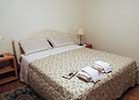Il Castello Sforzesco

Dove si trova Il Castello?
Il Castello Sforzesco è un grande edificio fortificato situato poco fuori dal centro storico di Milano.
Cosa ammirare al Castello Sforzesco
- La Sala delle Asse
Nella Sala delle Asse si ptrova una grande decorazione ad affresco raffigurante un pergolato di rami che intrecciandosiformano un emblema di Leonardo da Vinci
Leonardo ha lasciato il segno con altri schizzi in altre sale del castello.
Nel castello sitrova anche il Codice Trivulzano di leonardo che parla di architerrura religiosa e militare.
- Sala della Balla
Famosa è anche la Sala della Balla dove si conservano 12 grandi arazzi del Bramantino rappresentanti le attività agricole delle stagioni.
- Pinacoteca
Interessante anche la Pinacoteca, dove possiamo ammirare le opere di artisti come Mantegna, Tintoretto, Correggio, Tiziano e Canaletto.
Nella Pinacoteca si trovano interi cicli di pittura murale e di affreschi salvati da edifici religiosi o palazzi privati.
Negli ultimi anni si puo ammirare la Pietà Rodanini di Michelangelo opera scultorea incompiuta simile a quelle delle opere di Modigliani.
Per gli amanti della storia del mobile, vi consiglio di visitare il museo al primo piano, che mostra come si è evoluto del design del mobile milanese, dal medioevo ai giorni nostri.
E’ presente anch euna zona dedicata all’Egitto, che ospita papiri, steli e sarcofagi, e strumenti musicali, con oltre settecento pezzi.
Si puo visitare il sotterraneo del Castello, per scoprire gli angoli più segreti.
La storia del Castello Sforzesco
Questo imponente castello di mattoni rossi fu in origine la fortezza dei Visconti, Signori di Milano. Il fortilizio più antico risale al 1360 circa e inglobava le antiche mura medievali della città. Il Castello ha subito complesse trasformazioni nel corso dei secoli. Durante il Rinascimento divenne la dimora della potente dinastia degli Sforza e una delle principali cittadelle militari d’Europa. L’araldo visconteo-sforzesco, il biscione che ingolla un fanciullo, è ben visibile all’entrata del castello ed è uno dei simboli di Milano. La “vipera che il milanese accampa” è citata nella Divina Commedia ed è richiamata, tra altri, nel logo della Fininvest, nella versione del biscione che ingolla un fiore. Tra il Quattrocento e il Cinquecento qui vissero il Duca Francesco Sforza e Ludovico il Moro. Si deve al primo l’edificazione della torre d’ingresso, la Filarete, e dei torrioni rotondi.
Ludovico il Moro chiamò invece a corte l’architetto Bramante e Leonardo da Vinci. Sono opera del maestro fiorentino il sistema difensivo del castello e i bellissimi affreschi della Sala dell’Asse. In seguito alle dominazioni spagnole, austriache e francesi, nell’Ottocento il castello era ormai ridotto a un rudere. Tra il 1891 e il 1905 la ristrutturazione venne affidata a Luca Beltrami che, in stile storicista, recuperò spazi e forme del castello sforzesco: oggi attraverso il ponte levatoio si accede alla Piazza d’Armi, al Cortile della Rocchetta o alla Corte Ducale come dovevano apparire in epoca rinascimentale. Oltre a visitare le merlate e i cortili interni, è possibile accedere ai Musei Civici che custodiscono, oltre agli affreschi di Leonardo, un capolavoro da non perdere: la Pietà Rondanini di Michelangelo.
Dove si trova Il Castello Sforzesco: Piazza Castello 1, Milano
- Dove si trova Il Castello?
- Cosa ammirare al Castello Sforzesco
- La storia del Castello Sforzesco
- Where is the Castello Sforzesco located?
- What to admire at the Castello Sforzesco
- The story
Where is the Castello Sforzesco located?
The Castello Sforzesco is a large fortified building located just outside the historic center of Milan .
What to admire at the Castello Sforzesco
- The Sala delle Asse
In the Sala delle Asse there is a large fresco decoration depicting a pergola of branches that intertwine to form an emblem of Leonardo da Vinci
Leonardo left his mark with other sketches in other rooms of the castle.
In the castle there is also Leonardo’s Trivulzano Code which speaks of religious and military architecture.
- Sala della Balla
Also famous is the Sala della Balla where 12 large tapestries by Bramantino are kept, representing the agricultural activities of the seasons.
- Pinacoteca
The Pinacoteca is also interesting, where we can admire the works of artists such as Mantegna, Tintoretto, Correggio, Tiziano and Canaletto.
In the Pinacoteca there are entire cycles of mural painting and frescoes saved from religious buildings or private palaces.
In recent years it is possible to admire Michelangelo’s Pietà Rodanini, an unfinished sculptural work similar to those of Modigliani’s works.
For lovers of the history of furniture, I recommend you visit the museum on the first floor, which shows how Milanese furniture design has evolved from the Middle Ages to the present day.
There is also an area dedicated to Egypt, which houses papyri, steles and sarcophagi, and musical instruments, with over seven hundred pieces.
You can visit the basement of the Castle, to discover the most secret corners.
The story
This imposing red brick castle was originally the fortress of the Visconti, Lords of Milan. The oldest fortress dates back to around 1360 and incorporated the ancient medieval walls of the city. The Castle has undergone complex transformations over the centuries. During the Renaissance it became the home of the powerful Sforza dynasty and one of the main military citadels in Europe. The Visconti-Sforza herald, the snake swallowing a child, is clearly visible at the entrance to the castle and is one of the symbols of Milan. The “viper that the Milanese encamps” is mentioned in the Divine Comedy and is referred to, among others, in the Fininvest logo, in the version of the snake swallowing a flower. Between the fifteenth and sixteenth centuries the Duke Francesco Sforza and Ludovico il Moro lived here. The first was responsible for the construction of the entrance tower, the Filarete, and the round towers.
Ludovico il Moro instead called the architect Bramante and Leonardo da Vinci to court. The defensive system of the castle and the beautiful frescoes in the Sala dell’Asse are the work of the Florentine master. Following the Spanish, Austrian and French dominations, in the nineteenth century the castle was now reduced to a ruin. Between 1891 and 1905 the restructuring was entrusted to Luca Beltrami who, in the historicist style, recovered spaces and shapes of the Sforza castle: today through the drawbridge you can access the Piazza d’Armi, the Cortile della Rocchetta or the Ducal Court as they should appear in the Renaissance era. In addition to visiting the battlements and internal courtyards, it is possible to access the Civic Museums which house, in addition to Leonardo’s frescoes, a masterpiece not to be missed: Michelangelo’s Pietà Rondanini.
ALLOGGI A MILANO
Esplora le migliori strutture ricettive a Milano, tra Hotel, B&B e Appartamenti, selezionate sulla base di migliaia di recensioni verificate.
Aggiornato il: 12/08/2023 11:38:37
 ALLOGGI ECONOMICI
ALLOGGI ECONOMICI HOTEL
HOTEL APPARTAMENTI
APPARTAMENTI HOTEL FAMIGLIE
HOTEL FAMIGLIE